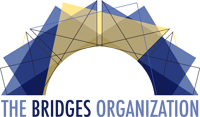Sunday, August 4, 1–5 pm at the Science Museum of Virginia
Bridges Family Day is our opportunity to give back to the community that has hosted our conference and to share the fun of mathematics and art with local families and Bridges participants. Family Day is always free and open to the public. Tickets are not required to enter the spaces in the museum where Family Day will take place: the Rotunda and the RF&P Forum (Floor Plan).
Short Film Festival and Q&A with Film Makers, 1:00 – 2:45 pm, RF&P Forum
Mathematical Poetry Reading, 3:00 – 5:00 pm, RF&P Forum
25 Hands-on Workshops, 1:00 – 5:00 pm, Rotunda
1. World’s Largest Hat Tile Assembly
presented by Chaim Goodman-Strauss and David Richeson
In 2023 a newly found aperiodic monotile, called the Hat Tile, took the mathematical world by storm. Together with experts on this tiling, assemble cut paper hat tiles into a giant hat tile tiling. Will it be the world record?

2. Card Castle Challenge
presented by Mircea Draghicescu
Examine some modular structures that can grow forever in all directions. Can you figure out their patterns and add more cards to the models? If you succeed, you will have a chance to take home a beautiful, mathematical card castle.

3. Matrix Mosaics
presented by Emily Dennett and Chris Bolognese
We’ll create beautiful and interesting mosaics by repeatedly iterating a pattern. Make one to take with you and help us to create a large-scale design!
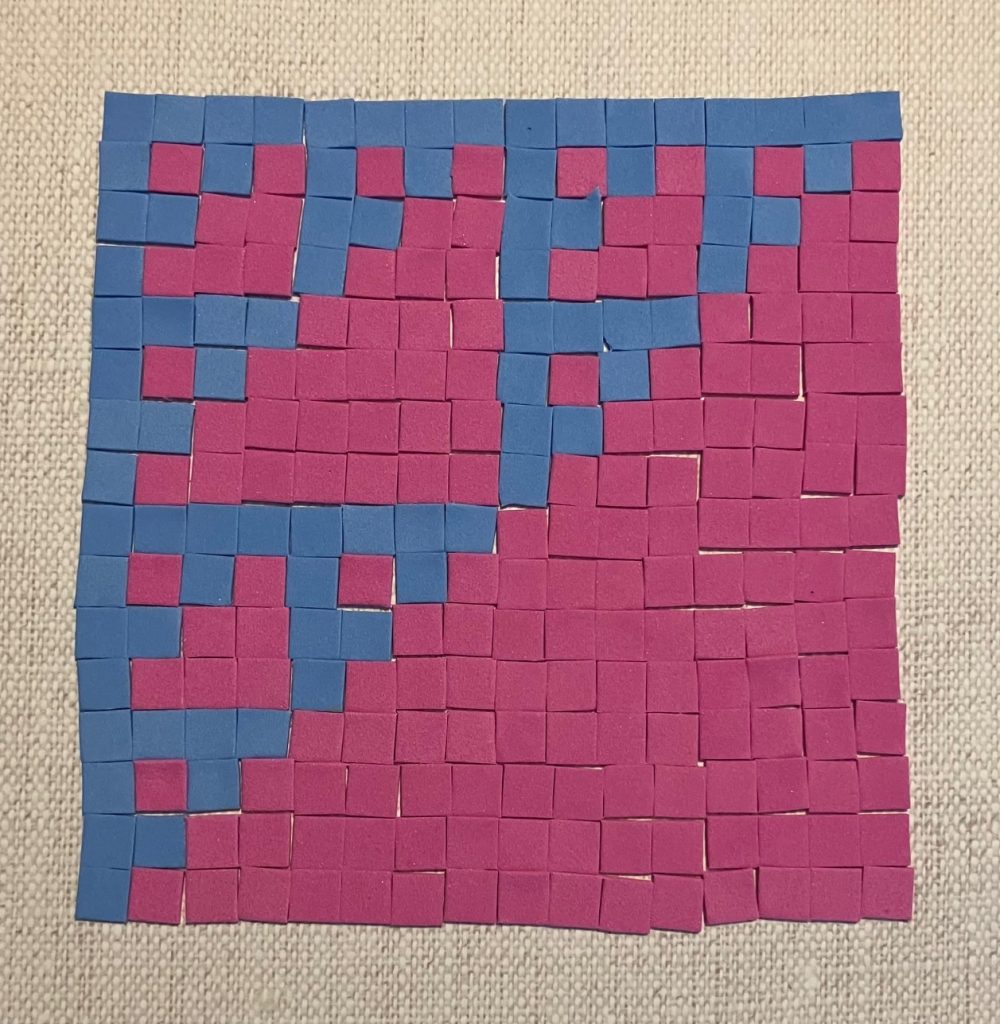
4. A-Puzzle-A-Day!
presented by Bruce Torrence
Play with this deceptively simple-looking 8-piece polyomino puzzle, where the goal is to fit all 8 pieces on the board so that the current date is showing. The puzzle has multiple solutions for every calendar date, and indeed, there are 94 distinct ways to assemble the puzzle to reveal August 4! How many can you find?

5. Crafting Icosidodecahedral Soccer Balloons
presented by Uli Gaenshirt
Icosidodecahedron sounds complicated, but it simply means having 20+12 faces, like a soccer ball stitched from 20 white hexagons and 12 black pentagons. The polyhedral version of this ball is known as a truncated icosahedron. An icosidodecahedron can also consists of 12 pentagonal faces, while the other 20 faces are triangles. This allows us to make an interesting observation: The edges there form six closed rings! The two icosidodecahedra in the upper part of the image were designed by Lorenz Stoer in 1567. Geometry offers alternatives for young soccer players!

6. Make and Take 3-D Paper Orbs
presented by Brett Degnan
Using pre-printed cardstock, participants will fold and tape 3-D paper orbs to take home right away. Choose from a variety of colors and discover how the printed curves transform a 2-D card into a 3-D orb!

7. Space Chips Die Cut
presented by Dick Esterle
Space Chips Die Cut is a simple system to produce basic two-dimensional shapes (3-, 4-, and 5-sided) that slide together easily into three-dimensional objects. Using upcycled cardboard, you roll out your own space chips to make and take as many 3D objects as your heart desires. Learn about the five Platonic solids and move to the thirteen Archimedean solids. Your only limit is time.

8. Latin Square Puzzle
presented by Stephen M. Gagola, Jr.
Put together an 8 by 8 puzzle in which all 64 pieces are congruent, but each row and column should consist of eight distinct orientations of the puzzle piece. The display shown here is one of 512 solutions that are possible. Each solution is actually a Latin square in which the “symbols” are the eight distinct orientations of the tile pieces. It is also an abstract mathematical object as it is the multiplication table of a commutative group in which each oriented tile represents a single group element. However, it also is simply a toy puzzle to be played with, broken apart and reassembled into different patterns. Choose your own level of interaction!

9. Coordinate-Motion Puzzles
presented by George Bell
A coordinate-motion puzzle is a mechanical puzzle where pieces move simultaneously in order to come apart. These puzzles can be tricky despite having a small number of pieces. There will be many 3, 4 and 6 piece 3D printed puzzles for people to play with. If you arrive early you can take home a free puzzle!

10. Pyramids and Tetrahedra Puzzles
presented by Stan Isaacs
This table has several puzzles which show some of the many ways one can construct a 3-sided pyramid (also called a tetrahedron) or a 4 sided pyramid (like most of the Egyptian ones). Many of pieces are made from balls glued together, and the smaller ones are good for younger children. The larger pyramids and some of the smaller ones with 5-ball pieces, can be quite challenging, even for adults.

11. Polyhedra Party
presented by Stacy Speyer
Color and construct your own geometric shape using a patterned net from “Cubes and Things,” a set of 3D coloring books! After coloring, you cut, fold, and tape your form together. You will see how the patterns you colored accent different symmetries of your new polyhedron.

12. Infinite Origami: Twist Folds and Adventures in Tessellation Design
presented by Madonna Yoder
Origami tessellations are infinitely repeating patterns folded from a single sheet of paper. In this activity you’ll learn the simplest twist fold used in origami tessellations, then help me design a tessellation as I’m folding it by repeatedly choosing between two alternatives for what comes next.

13. So-Soo-Yoo Board Game Playtime
presented by Jay Dearien and David Chappell
Learn how to play So-Soo-Yoo, a fun and educational math board game being presented at the Bridges conference. Up to six players, from nursery school to retired math professors.

14. Play Games with a New Deck of Cards
presented by Dan Palmer
We have designed a new deck of cards and visitors will have the opportunity to play a bunch of new games with them. From Cooperative to competitive games depending on whether you want to work together or claim victory over your opponents.

15. Stars and Polyhedra: String and Straw and Finger Geometry
presented by Lena Andersson and Karl Schaffer
In these hands-on activities we will investigate geometrical patterns by making stars and polyhedra with simple lengths and loops of string. We will see how numerical patterns determine which stars are possible. We can create similar entertaining mathematical shapes with fingers and hands. Paper straws held together by pipe cleaners also provide puzzle forms that fold into polyhedral shapes.

16. Origami Fiesta
presented by Faye Goldman, Tung Ken Lam, Char Morrow, Sue Pope, Neel Shrestha
We are 5 origami artists who love to bring mathematics into view through folding paper, aka making origami models. Whether you are experienced with origami or have never folded an origami model, young or old, comfortable with mathematics or not, we can teach you to fold some beautiful and intriguing things to take away with you. There will be quite a few models to choose from, you may have time to make more than one. Most of the models we are offering will be 2D or 3D geometric shapes, such as cubes, stars, boxes, and a few surprising items. Along the way we will point out where the mathematics in origami is hiding in plain sight.
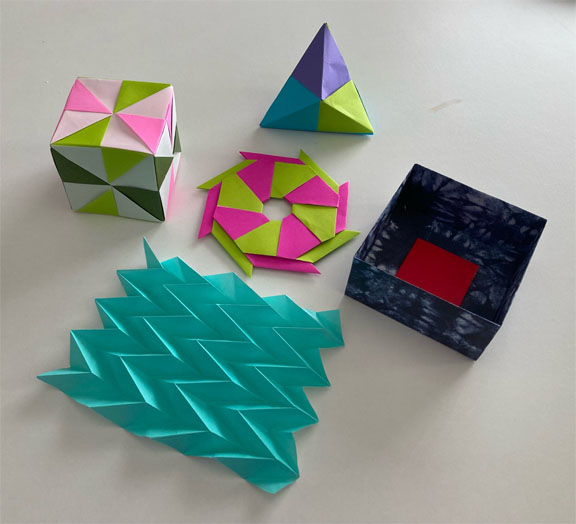
17. Knot or Not?
presented by Brian Mintz
Mathematicians have identified billions of different knots, but we still have trouble answering basic questions about them, like whether a given knot is really a knot or not. This activity explores this question along with constructions of related “Brunnian Links”, which have the peculiar property that they fall apart when any component is broken. Come and make some fun hair tie structures with us!

18. Knot Names
presented by Leilei Xia
Learn how to write your name as a knot. Then use a knot table to find the mathematical name of the knot that corresponds to your name knot.
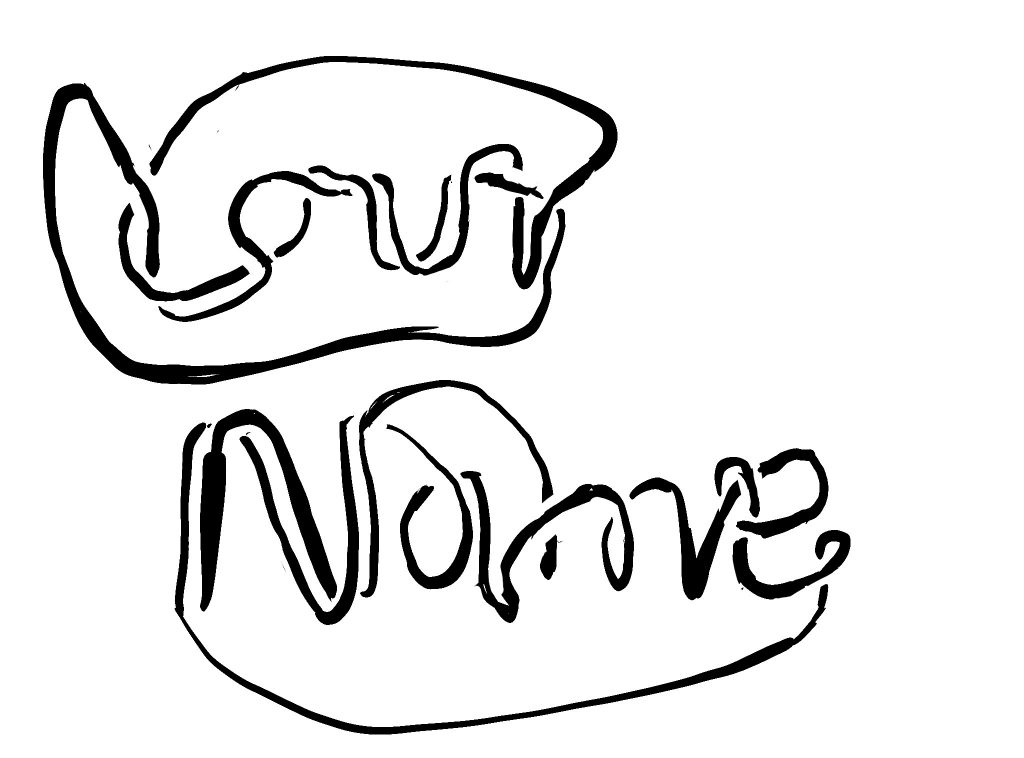
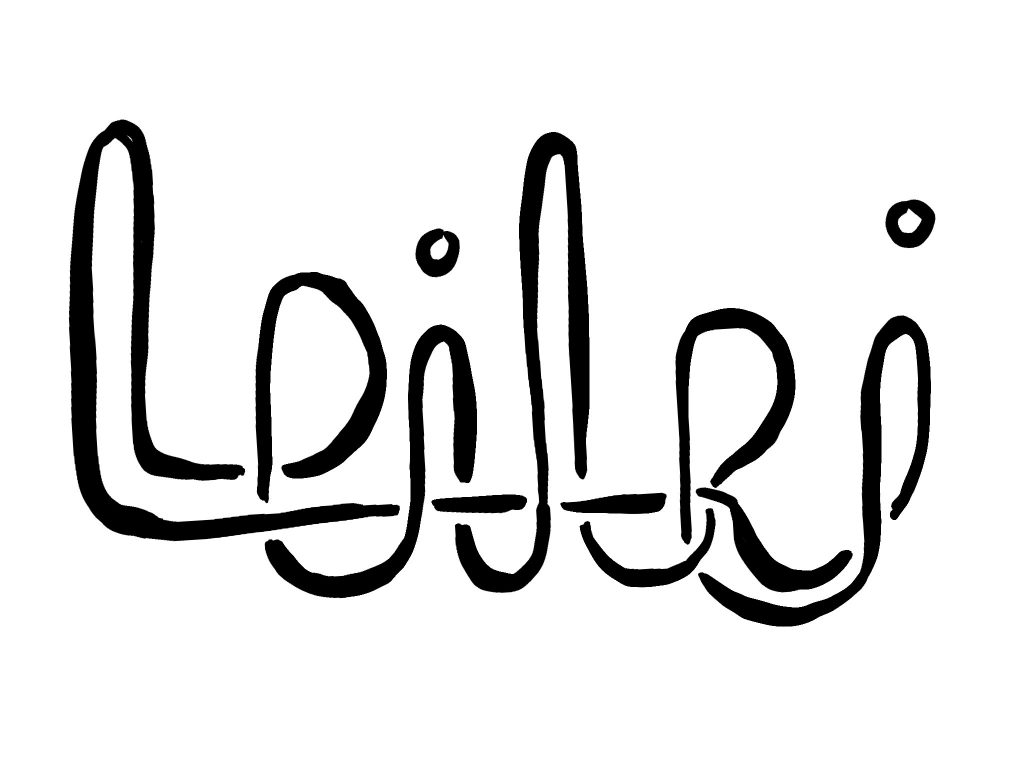
19. Truchet Cubes
presented by David Reimann
Participants will learn to make cubes from six strips of paper. The paper cubes will have faces decorated with Truchet patterns. The cubes can be assembled to create meandering paths.

20. Make your own mini Spot it! Game
presented by Helena Verrill
This activity involves taking either 7 or 13 circular cards, and making them into a mini game of “Spot it!”, with either 3 or 4 figures per card. A worksheet with diagrams and instructions is provided for planning the card designs. Then the actual cards can be decorated with stickers, stamps, and pens according to the plan.
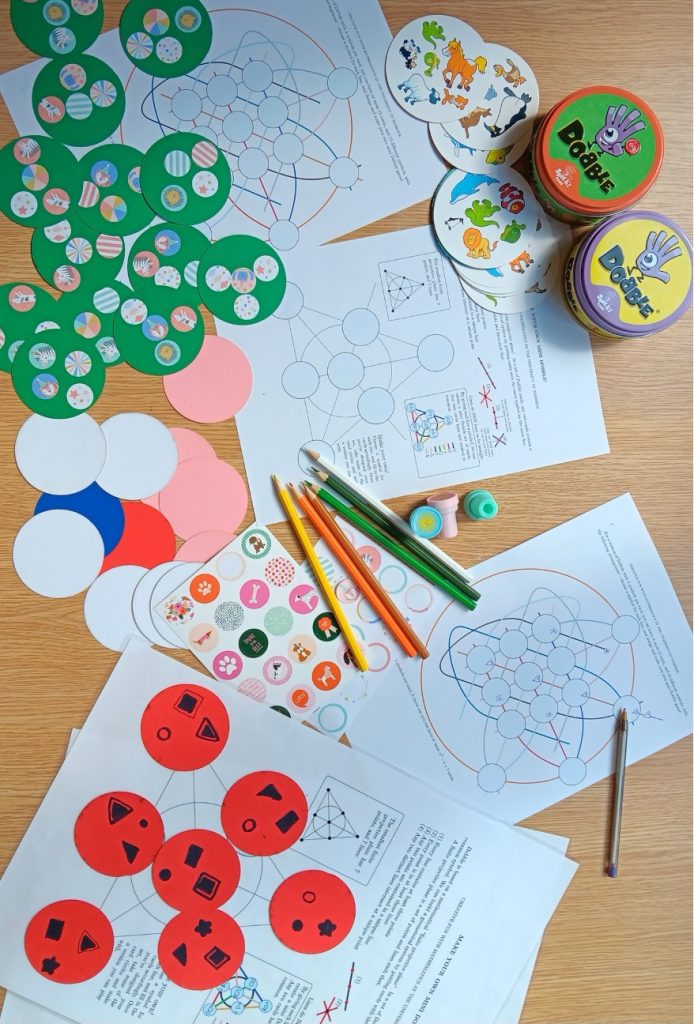
21. Swarm Image Creation
presented by Aryan Tamrakar
Capture a portrait of yourself and have it rendered using swarm techniques. Once the picture is generated, you can snap a picture of it, or it can be sent to the email destination of your choice.

22. Cutting with Code
presented by Chris Johnson
When we write code, we expect the output to be on the computer. What if the output was a real object that you could hold in your hands? In our exhibit, you’ll design your very own sticker with code and then fabricate it with help from a vinyl cutter.

23. World Map Puzzle
presented by Alex Van de Sande
In this activity families can work together to fit together a big puzzle of the world, but there’s a twist: like the real world, there’s no one right way to fit the pieces together. You can have a map centered around any location, and sometimes some countries might be “upside down” from one perspective. This map also makes it easy to count the area of each country/region and, unlike other maps, countries keep their correct proportion, so families can have a conversation about the real size of the world and how this might be different from the map they have at their classrooms or even on their phone.

24. Discover Your Basket-Making Superpower!
presented by James Mallos
Like a musician who can play an unfamiliar tune by sight-reading the notes, we’ll learn how to make a never-seen-before basket by reading a computer-generated character sequence. Technically speaking, we will be reading an alphabetic cipher of Carl Friedrich Gauss’ knot encoding from the 1820’s, while making the kind of knot projections on the sphere that knot theorist Kunio Murasugi in 1960 dubbed “special.” It’s easier than it sounds! You just put capital and lowercase letters together (in just about any way you can) to match a printed sequence. The basket clips together with interlocking notches, so no weaving experience is necessary. Participants get to take home a paper tape capable of making thousands of never-seen-before baskets.

25. Gluing Pentagons at Random
presented by Claudia Silva and Ros Toala
This is a hands-on, collaborative activity for all ages where we will place regular pentagons to simulate a cell growth process. Paper pentagons and colors will be provided. Visitors will draw and color a design on a pentagon and then glue it into the existing structure, the only rule is that the new pentagon must share a side with a pentagon already in place. Starting with a single pentagon, the goal is to create a random geometric structure that will grow as new pentagons are attached.

